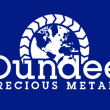by Hubert Marleau, Market Economist, Palos Management
July 12, 2024
In prepared remarks, the Fed chair, Jerome Powell, told Congress that a broad set of indicators suggest that the economy has cooled from its pandemic extremes and is no longer overheating. He added: “We are well aware that the economy now faces 2-sided risks and therefore can no longer focus solely on inflation,” and from the Fed’s perspective, labour tightness as an inflation driver is gone. In the last couple of months, the ratio of unemployed workers to total job openings has returned to the levels of 2019. In this regard, the marketplace is already ahead of the curve, making financial conditions for business and households much easier than they were 6 months ago, in spite of the robust performance of the U.S. dollar.
Given the recent string of soft data shown by the fall in Citibank's Macro Surprise Index, the Bank expects a rate cut in September to be followed by 7 more at each of the subsequent 7 meetings. It may not be as drastic as that, but returning the policy rate (5.38%) closer to a neutral one (4.15%) makes sense, for the current gap of 123 bps is way too high if the Fed wants to avoid a soft patch from turning into a recession. A potential trigger is the Sahm Rule: an uptick to 4.2% in July would get us into a much needed soft-slowdown scenario. Indeed, the St Louis Fed’s Real-GDP Nowcast model for Q2 slowed to an annualised growth of only 0.97%, rolling over the same as the money supply.
Thus there is an opening for the Fed to recalibrate its monetary stance because the disinflation path is back on track. The New York Fed’s survey of 1-year inflation expectations showed that the index had moderated in June to 3.0% from 3.2% in May. Headline consumer inflation slowed to 3.0% year-over-year in June, from 3.3% in May, while core inflation - a closely watched measure, which excludes volatile food and energy costs, had remained steady at 3.3% and risen only 0.2% m/m - much lower than what has been expected by economists polled by the Wall Street Journal.
This was the first fall in retail prices since the onset of the pandemic. Moreover, several other inflation indicators support the disinflation narrative. The Adobe Digital Price Index - a good real-time gauge of prices charged for thousands of items sold on the internet - was 4.2% lower in June than it was a year ago, while the Truflation measure, which is updated daily, has fallen to 1.8% y/y from 2.6% at the end of May. Meanwhile, the Roger’s Agriculture index has dropped 9.5% to 1290 in the last 3 months. How much further evidence is needed to cut rates? On an earnings call on Thursday morning, PepsiCo C.E.O. Ramon Laguarta said the company was considering lowering prices on products where consumers want value. Similar statements were made by Congra, Delta Airlines and Cheetos. The point is that consumers have had enough of price increases and now they’re pushing back.
These are the kind of numbers and comments that should provide the needed confidence that the wind in the Fed’s sails is pointing toward a looser monetary stance. Generally, when the expected inflation rate (3.0%) is lower than the unemployment rate (4.1%), it’s a sign that monetary policy doesn’t need to stay too tight. The Fed’s Mary Daly and Austan Goolsbee were profoundly encouraged by the CPI data and see that some policy adjustments will be warranted. The Bank of America is of the opinion that when you plug in the Producer Price Index internals into Core PCE - the Fed’s favourite measure of inflation - it looks pretty good because it produces a 0.17% m/m increase for June. Unsurprisingly, the swap market is pricing an 96% chance that a September rate cut is in the offing since it's predicting that inflation could run as low as 1.1% next year.
The case for a rate cut is settled. So, why wait? WSJ”s Aaron Back wrote: “A pleasant surprise just might be awaiting investors during the dog days of summer.”
Copyright © Palos Management















